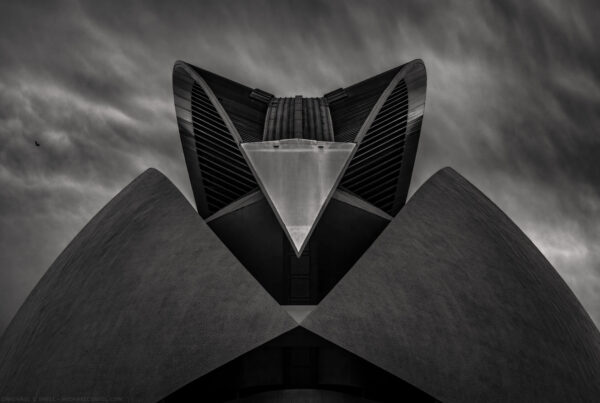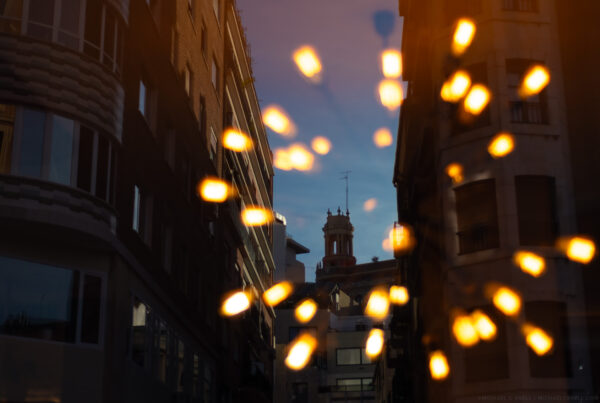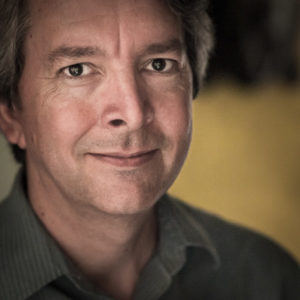
The Spanish town of Alcántara takes its name from the Arabic word, al-Qanṭarah, meaning “the bridge” (I’ve also seen it translated as “the arch” but either is appropriate in this case). The bridge in question is the spectacular one you see in the photo above, built by the Romans who ruled here from the 2nd century BC to the 5th century. The 6-span, stone arch bridge was built over the Tagus River between 104 and 106 AD by order of the Roman emperor Trajan. It has been damaged in several wars over several centuries, but always rebuilt and it is still in use. The bridge also features a triumphal arch at its midpoint, and a small temple on the south-eastern end. The bridge, arch and temple were all designed by the architect, Gaius Julius Lacer, who is entombed in the temple.
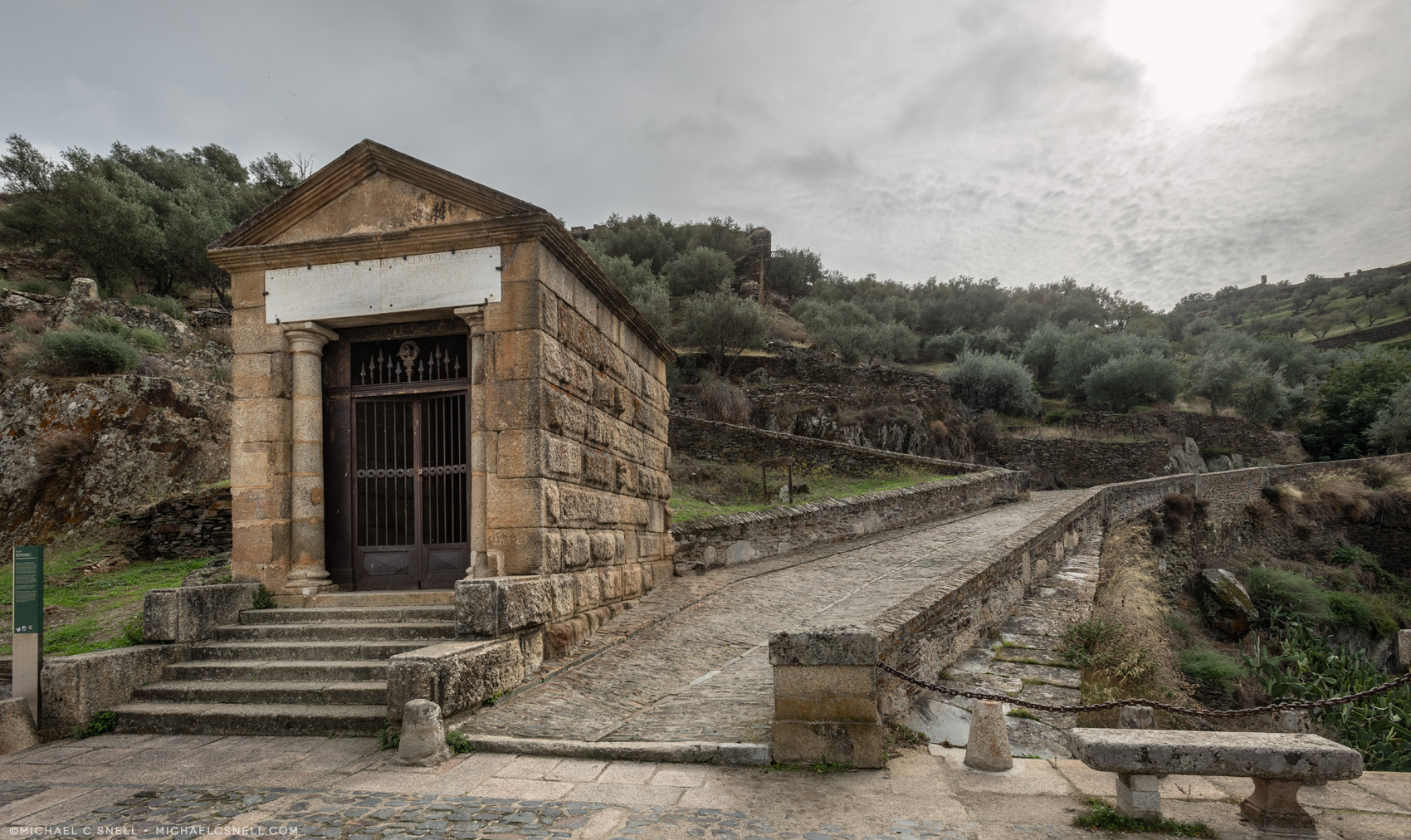
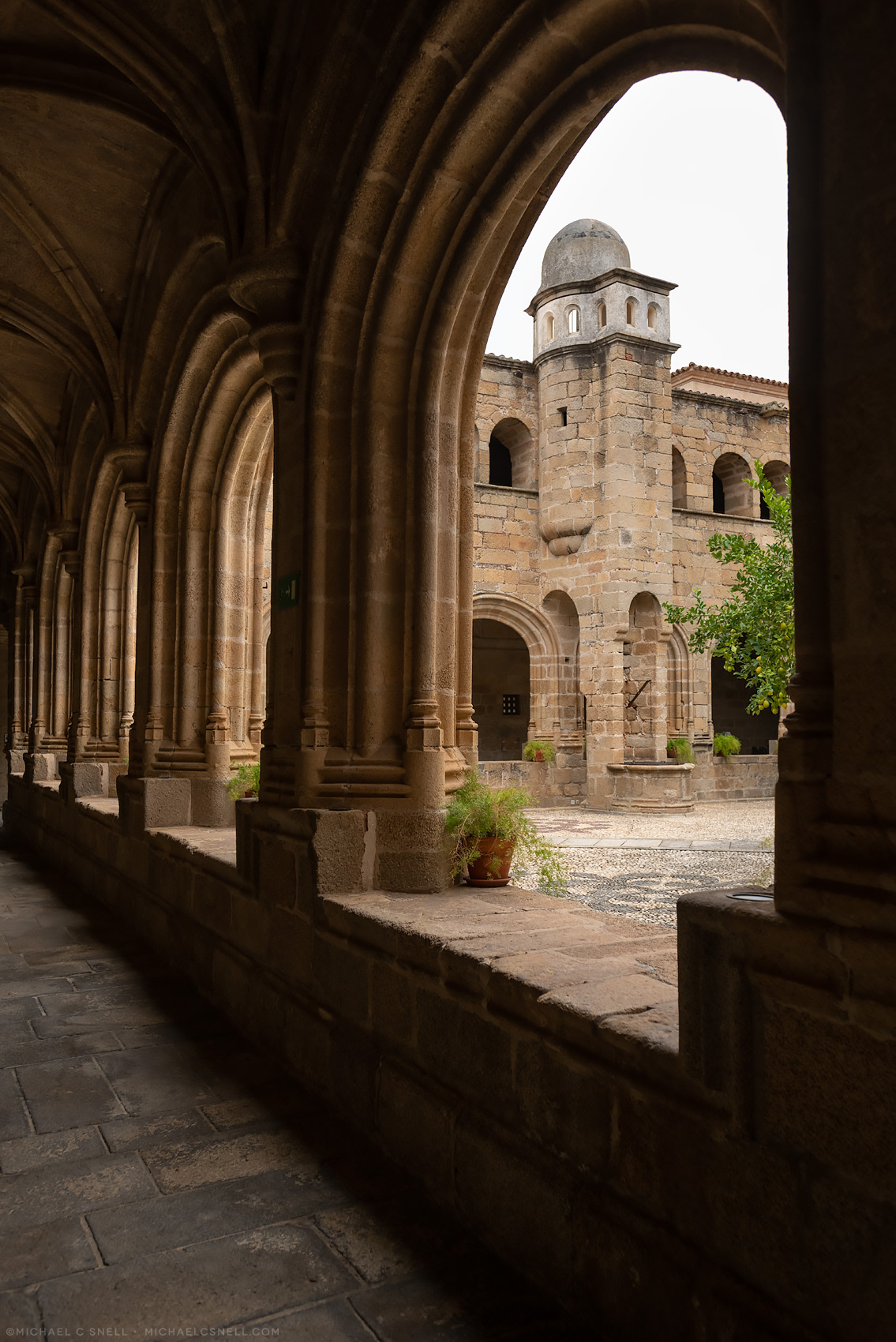
San Benito de Alcántara
Construction began on the monastery of San Benito de Alcántara in 1505 and continued for most of that century. Damaged by war and the 1755 Lisbon earthquake, it was abandoned until 1966 when it was restored by a hydroelectric company. In the 1980s it became the San Benito de Alcántara Foundation.
The former monastery is serenely beautiful, its courtyard filled with lemon and orange trees.
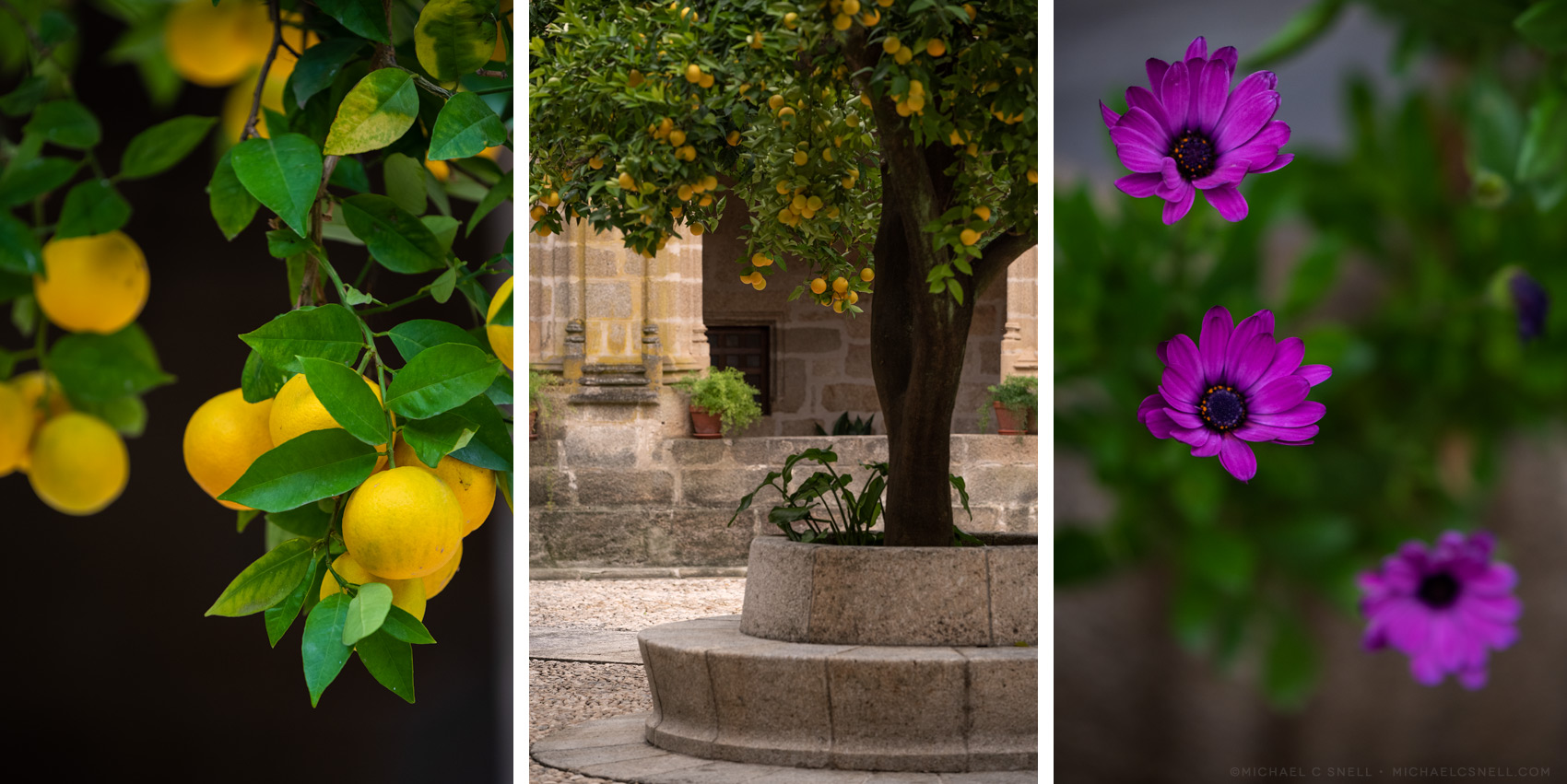

Cork Oak
En route to our next stop, we passed several Cork Oak trees. These oaks are evergreens and their bark is harvested to provide corks for wine bottles, cork flooring, and many other products. The harvesting, all done by hand, does not kill the tree and can be repeated approximately every 9 years. Cork Oaks can live to be hundreds of years old but must be 25 years old before carrying out the first harvest.

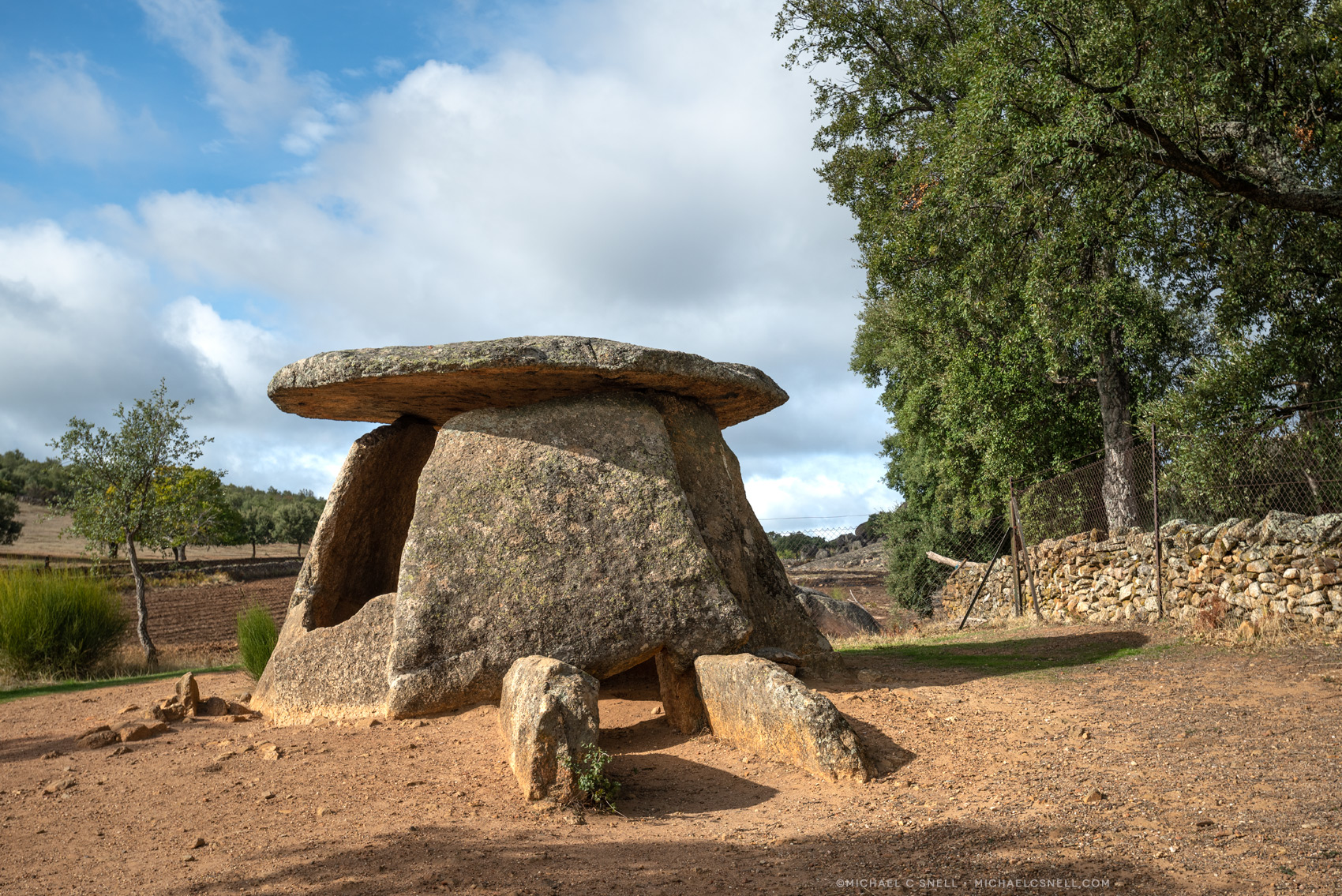
Dolmen el Mellizo
Dolmens are ancient, megalithic structures constructed of large slabs of stone. The Dolmen el Mellizo is one of the Dolmens of Valencia de Alcántara, an archaeological zone of the Spanish municipality of Valencia de Alcántara. There are more than 40 dolmens in this part of Extremadura and they date back to the 4th or 3rd millennia BC. The Dolmen el Mellizo (“The Twin”) is one of the few that still has its chamber covered by the granite slab on top.
There are five routes outlined by the local tourist office that you can explore to see more of these structures. It is something that I would definitely like to do on a future trip to Extremadura. The dolmens themselves are fascinating, but the roads that lead you to them are spectacularly scenic as well.
New Extremadura book, coming soon…
All of these recent blog posts on the Extremadura region of Spain have been part of a larger project of mine to create a new book. I’m working on a visual guide to Extremadura that will be similar in form to my other Spain books, but will be less of a day-by-day trip journal and more of a visual overview of the region based on several trips I have made over the past few years. I’m planning on titling it, “Extremadura, Spain: An admittedly incomplete visual guide to an often-overlooked region of western Spain.” The “admittedly incomplete” part is important. I had hoped to be more complete with this book and had at least one more trip planned for Extremadura in 2020, but the pandemic prevented it from happening. I put the book on hold for a while, but since the situation is dragging on as long as it is, I’ve decided to move forward with this edition of the book. I will (hopefully) update it in the future with images and information about more Extremaduran locations once travel resumes.
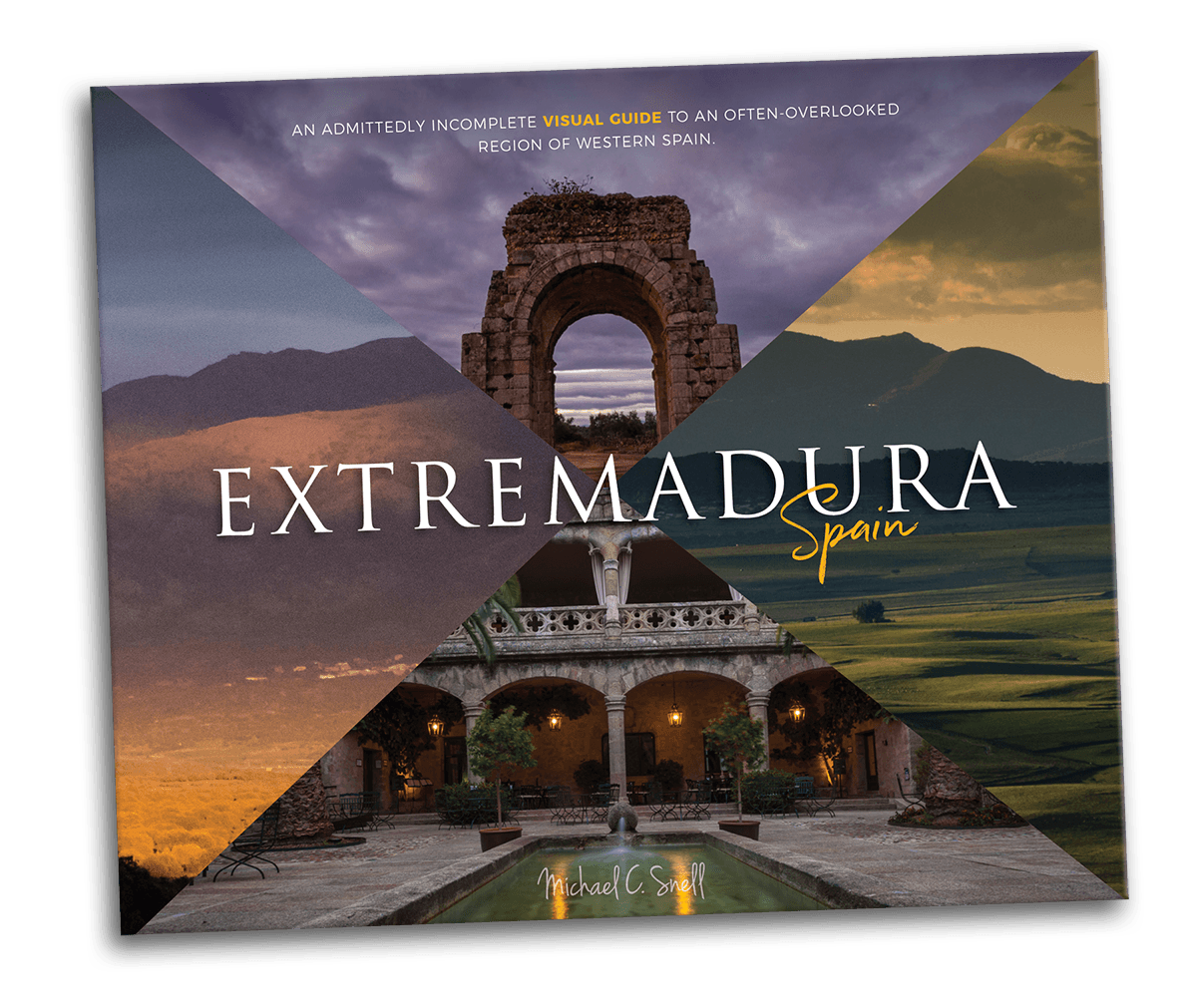
Stay tuned for the book release announcement, or drop me an email if you’d like to be put on the list to be notified when it’s available.
